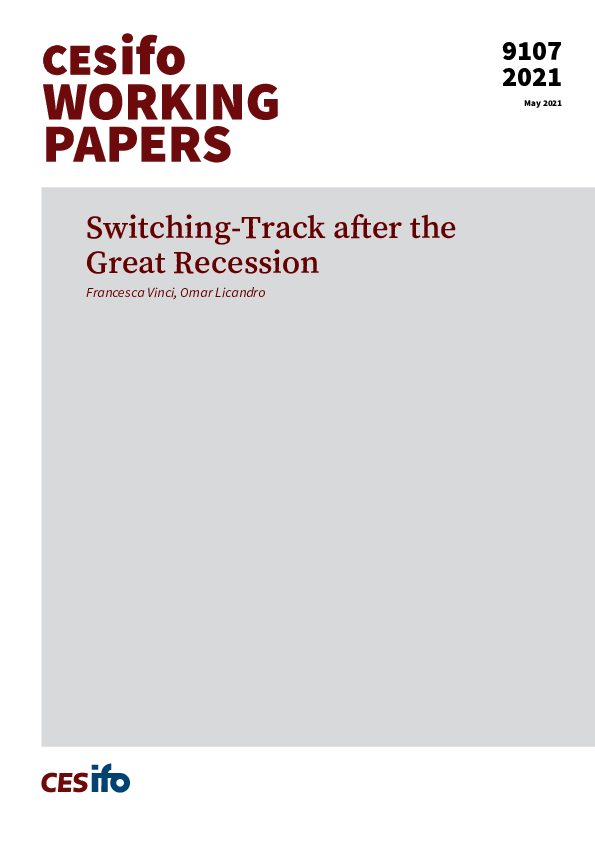Switching-Track after the Great Recession
CESifo, Munich, 2021
CESifo Working Paper No. 9107

We propose a theoretical framework to reconcile episodes of V-shaped and L-shaped recovery, encompassing the behaviour of the U.S. economy before and after the Great Recession. In a DSGE model with endogenous growth, negative demand shocks destroy productive capacity, moving GDP to a lower trajectory. A Taylor rule policy designed to reduce the output gap may counterbalance the shocks, preventing the destruction of economic capacity and inducing a V-shaped recovery. However, when shocks are deep and persistent enough, like during the Great Recession, they call for a downward revision of potential output measures, the so-called switching-track, weakening the recovering role of monetary policy and inducing an L-shaped recovery. When calibrated to the U.S. economy, the model replicates well the L-shaped recovery and switching-track that followed the Great Recession, as well as the V-shaped recoveries that followed the oil shock recessions.
Fiscal Policy, Macroeconomics and Growth
Monetary Policy and International Finance